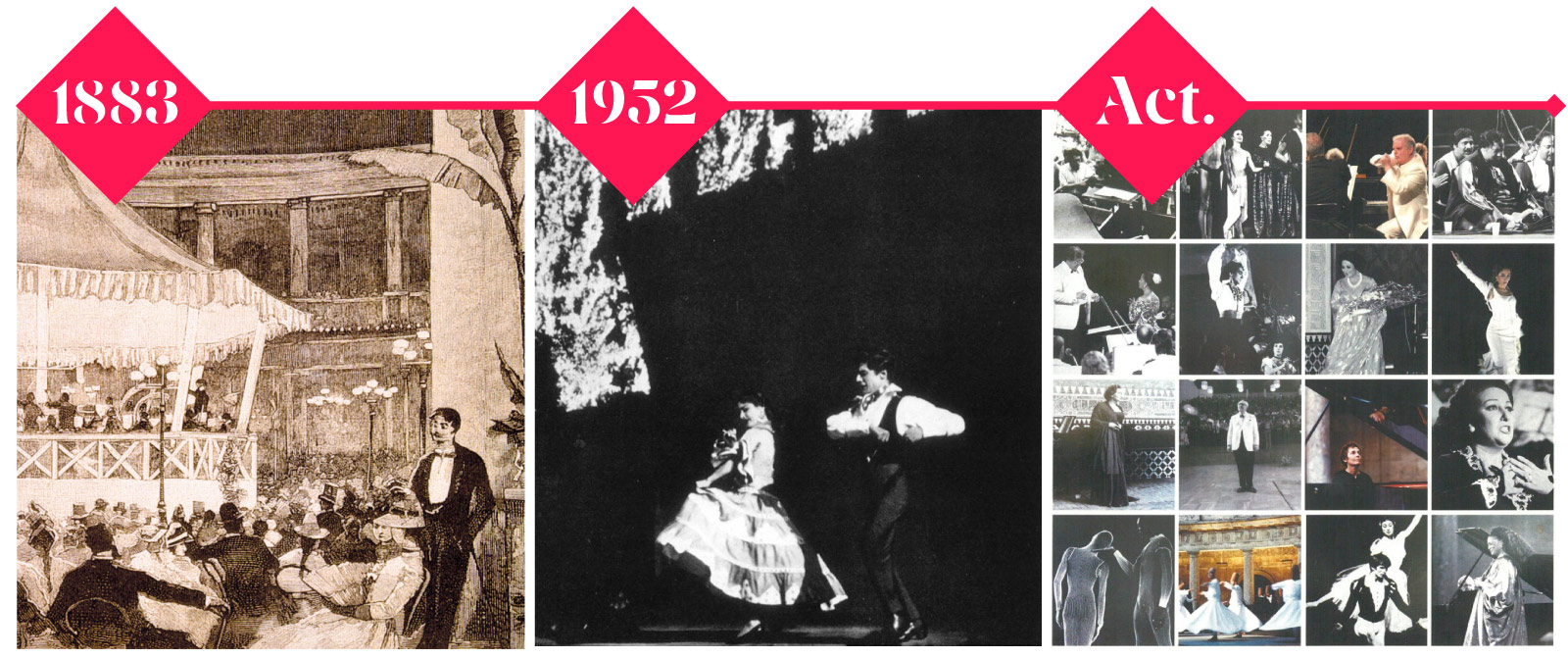
 Tickets
Tickets

History

The International Festival of Music and Dance of Granada has its origins in the symphonic concerts held since 1883 in the Palace of Carlos V during the Corpus Christi celebrations. These concerts gave the city its first opportunity to experience and enjoy the great European musical repertoire “with a grand orchestra” as early as the 19th century.
Of particular significance during those years was also the celebration of the Cante Jondo Competition, organized in 1922 by García Lorca, Falla, and other intellectuals and artists of the time, such as Andrés Segovia, Fernando de los Ríos, Zuloaga, Manuel Ángeles Ortiz, Turina, and Rusiñol.
The Festival was created in 1952 under the name "First Festival of Spanish Music and Dance," with the support of the Ministry of Foreign Affairs, the Ministry of Culture, and the Ministry of Information and Tourism of Spain.
The statement from the then Director General of Fine Arts, Antonio Gallego Burín, is revealing: "We aspire to invite in successive years… the foremost musical organizations in the world, to continue what is being done this time with national elements. We also intend for this disseminating work of musical art to be joined by special courses and research on Hispanic music, and for the first Festival to be the start of a Spanish endeavor of universal resonance."
In 1953, the II International Festival of Music and Dance of Granada was held, a name that is still used today, and the unique cypress theater in the Generalife Gardens was inaugurated, built to host the Spanish dance and classical ballet sessions of the Festival.
The International Festival of Music and Dance is one of the most emblematic cultural events in Granada, taking place between June and July in the palaces of the Alhambra and the city’s main monuments and secluded areas. The Granada Festival is renowned for its extraordinary venues and for featuring the great performers of the moment, alongside well-considered choices of young artists who are set to become the masters of the future.
Images of Artur Rubinstein, Victoria de los Ángeles, and Andrés Segovia performing in the most beautiful Arab courtyards of the Alhambra have traveled the world, as have those of Carl Schuricht, Herbert von Karajan, and Sergiu Celibidache conducting in the Palace of Carlos V, and Margot Fonteyn and Rudolf Nureyev dancing in the Generalife Gardens, to name just a few notable examples. The Festival can also proudly claim to have welcomed early appearances by figures such as Teresa Berganza, Lorin Maazel, Marta Argerich, Antonio el bailarín, Vladimir Ashkenazy, Jessye Norman, Montserrat Caballé, and Joaquín Achúcarro, among others. This commitment continues today with annual programming that features not only the great figures of music and dance but also outstanding young artists, musicians, and dancers, while incorporating important professionals who support emerging projects.